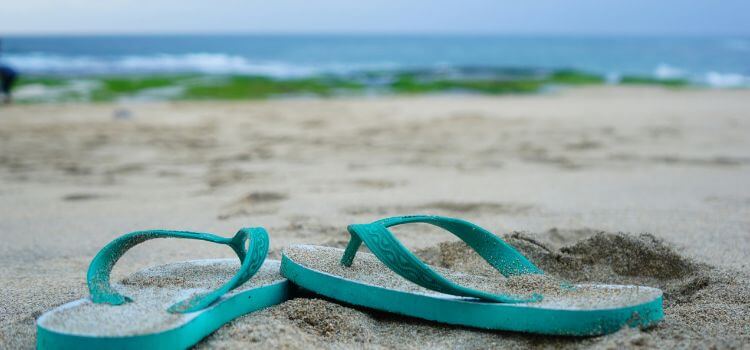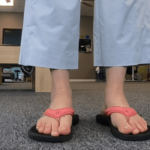As an Amazon Associate I earn from qualifying purchases.
In the realm of summer footwear, flip-flops reign supreme for their casual charm and breezy comfort. However, beneath their laid-back exterior lies a potential risk to your back health.

While flip flops may seem innocuous, their minimalistic design and lack of support can have significant implications for your musculoskeletal well-being, particularly for your back.
In this in-depth investigation, we’ll explore the question: Are flip flops bad for your back? However, as we delve deeper into their impact on our health, particularly our back, it’s crucial to assess whether their benefits outweigh the potential drawbacks.
This guide will provide a straightforward look at the pros and cons of flip-flops, their biomechanical effects on your back, and practical steps you can take to mitigate any negative impacts.
The Pros and Cons of Flip-Flops
Pros
- Convenience: Slip on and go—nothing beats the simplicity of flip-flops.
- Breathability: Ideal for hot weather, keeping your feet cool and dry.
- Affordability: Generally, a budget-friendly footwear option.
Cons
- Lack of Support: Flip-flops offer minimal arch support, which can lead to foot and back problems.
- Instability: Their loose fit can cause instability, increasing the risk of trips and falls.
- Poor Cushioning: Limited shock absorption puts extra strain on your feet and back.
Impact on Your Back Health
Biomechanical Implications
Flip-flops alter the natural gait by forcing the toes to grip the sole, leading to an unnatural walking pattern. This slight but significant change can affect the alignment of your entire body, from your feet up to your spine. According to experts, wearing flip-flops frequently can contribute to issues such as:
Lower Back Pain: The lack of support and cushioning puts additional stress on the lower back.
Misalignment: Poor foot mechanics can lead to misalignment of the hips and spine.
Muscle Strain: Over time, compensating for the lack of support can strain muscles in the back and legs.
Expert Opinions and Studies
Several studies have highlighted the potential risks associated with prolonged flip-flop wear. For example, a study published in the Journal of the American Podiatric Medical Association found that flip-flops can significantly alter gait mechanics, leading to increased pressure on the lower extremities and back.
Best Practices for Wearing Flip-Flops
While it’s best to limit the use of flip-flops, there are ways to minimize their negative impact when you do wear them:
Choose Quality: Opt for flip-flops with arch support and cushioning.
Limit Wear Time: Keep flip-flop usage to short durations and avoid prolonged wear.
Proper Fit: Ensure they fit well to evade unneeded pressure on your feet.
Use for Appropriate Activities: Reserve flip-flops for beach trips or poolside lounging rather than extended walking or physical activities.
Cleaning and Maintenance Guide
Keeping your flip-flops clean and hygienic is essential to prolong their life and maintain foot health. Follow these steps for proper care:
- Wash Regularly: Use mild soap and warm water to clean your flip-flops. Clean softly with a gentle brush to eliminate filth and debris.
- Dry Thoroughly: Allow them to air-dry completely before wearing to prevent mold and bacteria buildup.
- Inspect for Wear and Tear: Regularly check for signs of wear and replace them as needed to ensure proper support and hygiene.
Alternative Footwear Options
If you’re concerned about the impact of flip-flops on your back, consider these healthier alternatives that offer similar convenience:
Supportive Sandals: Brands like Birkenstock and Teva provide options with better arch support and cushioning.
Athletic Slides: Designed for comfort and support, these are a good alternative for casual wear.
Closed-Toe Sandals: Offer the breathability of flip-flops but with added support and protection.
Conclusion
While flip-flops are undeniably convenient, it’s necessary to be conscious of their possible effect on your back health. By understanding the pros and cons, and implementing best practices for their use, you can enjoy the benefits without compromising your well-being. Consider exploring more supportive footwear options and always prioritize your back health in your footwear choices.
Amazon and the Amazon logo are trademarks of Amazon.com, Inc, or its affiliates.




Leave a Reply